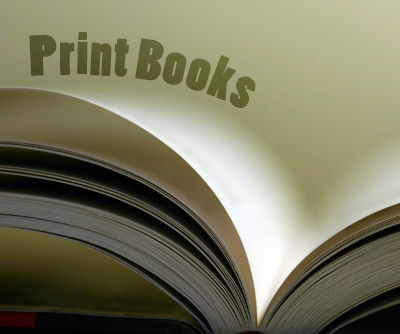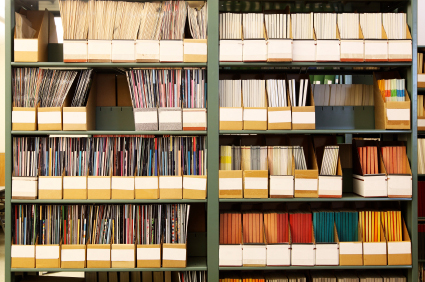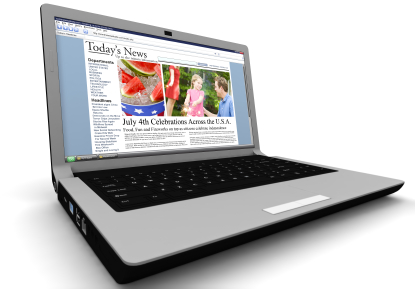The Works Cited Page
The most important thing to know is that to avoid being accused of plagiarism, you MUST have a works cited page at the end of your research paper. It provides the information necessary for a reader to locate and be able to read any sources you cite in the essay. Each source you cite in the essay must appear in your works cited list; likewise, each entry in the works cited list must be cited in your text.
The next thing to know is that a bibliography and a works cited page are NOT the same thing, and MLA style calls for a list of works cited. Whereas a bibliography lists all sources consulted in preparing a paper, a works cited page lists only those sources that are actually cited in the paper. (For comparison, the list of sources at the end of this lesson is done in Chicago style instead of MLA and is a bibliography, not a list of works cited.)
Entire books are dedicated to listing and discussing literally dozens of possible ways to write a works cited entry in MLA style. We’re going to focus on some of the main types of sources you might use while writing a research paper, but there are many other types of materials that won’t be used as examples here. When in doubt, consult the latest MLA Handbook for Writers of Research Papers or some of the up-to-date, well-respected university writing centers online. Ask your teacher for suggestions about such sites.
Some types of works cited entries
Print books

Source: "Print Books," istockphotos
One author: Arrange the information in four groups, each followed by a period and one space. (1) Author’s or editor’s name; (2) the title italicized; (3) the city of publication: publisher, and date; (4) the medium of publication.
- Costanzo, Gayle. Living in Southern California. San Diego: Prentice, 2007. Print.
- Costanzo, Gayle, ed. Living in Southern California. San Diego: Prentice, 2007. Print.
More than one author: Invert the first name, but then put the others in proper order.
- Two authors: Costanzo, Gayle, and Adria Pease.
- Three authors: Costanzo, Gayle, Adria Pease, and
Ralph Ziti. - Four or more authors: Costanzo, Gayle, et al.
Corporate author: American Management Corporation.
Unknown author: Begin with the work’s title, for example, Bridges
Two or more works by the same author: Use the author’s name only for the first entry. For other entries, use three hyphens followed by a period, which must stand for exactly the same name(s) in the first entry. List the titles in alphabetical order, ignoring articles A, An, or The at the beginning of a title.
- True, Tracy. The Famous Line. Chicago: U of Chicago, 2006. Print.
- ---. Growing Old Gracefully. New York: Penguin, 2003. Print.
Articles in periodicals

Source: Periodicals in a Library, luoman, istockphotos
Article in a magazine: List in order (1) the author’s name; (2) the title of the article in quotation marks; (3) the italicized title of the magazine; (4) date and page numbers separated by a colon; (5) the medium of publication.
- Fay, J. Michael. "Land of the Surfing Hippos." National Geographic Aug. 2004: 100+. Print.
- Lord, Lewis. “There’s Something about Mary Todd.” US News and World Report 19 Feb. 2001: 53. Print.
Note about dates: If the magazine is issued monthly, give just the month and year. If it’s issued weekly, give the exact date. Abbreviate the names of the months except May, June, and July. Notice that the dates are written in what’s known as the universal method: day month year, with no commas.
Article in a daily newspaper: List in order (1) author’s name, if known; (2) title of the article in quotation marks; (3) italicized name of the newspaper; (4) date; (5) page number (including section letter); (6) medium of publication. If the article does not appear on consecutive pages, use a plus sign (+) after the page number.
- Brummitt, Chris. “Indonesia’s Food Needs.” Boston Globe 6 Feb. 2005: A7+. Print
Unknown author: Begin with the work’s title, for example, “Tackling the Blues”
For articles appearing on consecutive pages: Provide the range of pages. When an article does not appear on consecutive pages, give the number of the first page followed by a plus sign (107+).
Electronic sources

Source: Laptop showing electronic source, sjlockes, istockphotos
There are multitudes of ways to write works cited entries for electronic sources because information on these sources varies widely. A major change in the latest edition of the MLA Handbook is this: MLA style no longer requires a Web address (URL) in citations for online sources. MLA style does call for a sponsor or publisher for most online sources, though. If a source has no sponsor or publisher, use the abbreviation n.p. (for “no publisher”) in the sponsor position. If there is no date of publication or update, use n.d. (for “no date”) after the sponsor. Most entries for electronic sources end with the date you accessed the information. Here are just two brief examples. The possibilities are endless, so find an up-to-date, reliable source of information about MLA formatting.
An entire Web site: Halsall, Paul. Internet Modern History. Fordham U, 26 May 2009. Web. 19 Jan. 2011.
Short work from a Web site: Shiva, Vandana. “Bioethics: A Third World Issue.” Native Web, n.d. Web. 18 Feb. 2010.
There are ways to write citations for works of art, cartoons, advertisements, recordings, films or videos, radio or television programs, live performances, e-mails, interviews, personal letters, etc.
Looking at a works cited page can answer many of your questions. You can view an example with explanatory notes here. Scroll down to page seven to see the list of works cited. Browse the rest of the paper to learn how parenthetical documentations are woven into the text.
Citation Generators: Shortcut or Long Way Around?
There are several online citation generators, software tools that promise to create citations based on information you input. All you have to do then is copy the citation and paste it on your works cited page. Doesn’t that sound great?
Well, sort of. The truth is that the rules built into the software don’t cover every situation, and the output is only as accurate as the input. If you enter a typo or error, or leave out some data, your results will be inaccurate. Even the citation generators themselves warn users to review results carefully. (Wasn’t this supposed to be a shortcut?) So, the paradox of citation generators is like that of the grammar checker on your word-processing software. Both are useful to the extent that you already thoroughly understand the rules and can accept or reject the output.
Bottom line: a style manual like the MLA Handbook is the authority for citation and formatting rules.